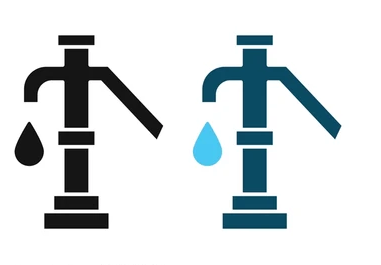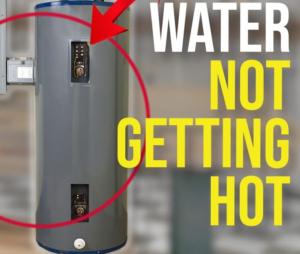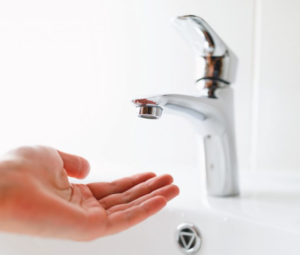There are few things more frustrating than low water pressure when you’re trying to shower, wash dishes, or even water your garden. Whether it’s a trickle from your showerhead or a slow-filling washing machine, low water pressure can make simple daily tasks time-consuming and stressful. But don’t worry—there are solutions to this problem. In this guide, we’ll explore the common causes of low water pressure, easy fixes you can try at home, and when it’s time to call a professional plumber.
Understanding Low Water Pressure
Water pressure refers to the force that pushes water through your pipes and into your faucets and fixtures. It’s typically measured in pounds per square inch (PSI). The normal water pressure for a home is between 40 and 60 PSI. Anything significantly lower can result in weak water flow, which is what we commonly refer to as low water pressure.
The first step in fixing low water pressure is identifying what’s causing the problem. There are several potential culprits, and understanding them can help you tackle the issue more effectively.
Common Causes of Low Water Pressure
1. Clogged Pipes
Over time, mineral deposits and debris can accumulate inside your pipes, particularly in areas with hard water. This buildup reduces the pipe’s interior diameter, restricting water flow and lowering pressure. Signs that your pipes might be clogged include sputtering water from faucets, slow-draining sinks, and uneven water pressure.
Solution: You can try cleaning faucet aerators and showerheads by soaking them in vinegar to dissolve mineral buildup. However, if the buildup is inside the pipes, professional cleaning or pipe replacement may be necessary.
2. Leaky Pipes
A leak in your plumbing system can lead to reduced water pressure because water escapes before reaching its destination. Leaks may not always be visible, but they can still wreak havoc on your home’s water pressure and increase your water bill.
Solution: Inspect areas where leaks are common, such as under sinks, around appliances, and in your basement. If you spot any leaks, repair them immediately or call a plumber if the leak is substantial.
3. Closed or Partially Closed Valves
Your home’s plumbing system relies on several valves, including the main water shutoff valve and individual fixture shutoff valves. If any of these valves are partially closed, it can restrict water flow to your faucets.
Solution: Check the main water valve, typically located near where your water line enters the home, and ensure it’s fully open. Additionally, check individual shutoff valves under sinks and near appliances to make sure they are open.
4. Water Supply Issues
If your home’s water comes from a municipal supply, issues with the public water system could be the cause of low pressure. Scheduled maintenance, broken water mains, or high demand during peak hours can all lead to reduced water pressure.
Solution: Contact your water provider to inquire about any service issues or scheduled maintenance in your area. If the problem is on their end, they’ll be responsible for fixing it.
5. Old or Corroded Pipes
If your home has older pipes, particularly galvanized steel, they may have corroded or become worn over time. Corroded pipes reduce water flow, leading to low pressure and possible water contamination.
Solution: Replacing old pipes with modern materials such as copper or PEX can resolve the issue. This is a more significant investment but will improve water flow and prevent future problems.
6. Pressure Regulator Problems
Some homes have a pressure regulator installed to maintain consistent water pressure. If this device malfunctions, it can cause either excessively high or low water pressure.
Solution: If you suspect your pressure regulator is the issue, you’ll need to have it inspected and possibly replaced by a professional plumber.
Quick Fixes for Low Water Pressure
Once you’ve identified the cause of your low water pressure, there are several quick fixes you can try before calling in the pros.
1. Clean Your Faucets and Showerheads
Over time, mineral deposits can clog up your faucets and showerheads, leading to reduced water flow. You can clean these fixtures by removing them and soaking them in vinegar for several hours. After soaking, scrub away any remaining deposits and reinstall the fixtures.
2. Install a Water Softener
If you live in an area with hard water, mineral buildup inside your pipes could be causing low water pressure. Installing a water softener will reduce the minerals in your water, preventing future buildup and protecting your plumbing system.
3. Check for Water Leaks
Inspect your home for any signs of leaks. Even a small leak can significantly impact your water pressure. Fixing leaks promptly will not only improve pressure but also save on your water bill.
4. Adjust the Pressure Regulator
If you have a pressure regulator, you can try adjusting it yourself. Look for a screw on top of the regulator, which you can turn clockwise to increase pressure. Be careful not to turn it too far, as excessively high water pressure can damage your pipes.
When to Call a Professional
Sometimes, despite your best efforts, low water pressure can’t be fixed with DIY methods. In these cases, it’s best to call a professional plumber. Here are a few scenarios where expert help is necessary:
1. Persistent Low Water Pressure
If your water pressure remains low even after trying the above solutions, a professional plumber can conduct a more thorough inspection of your plumbing system. They’ll be able to locate hidden leaks, replace worn-out pipes, or fix any issues with your pressure regulator.
2. Old Plumbing System
If your home has an aging plumbing system with corroded pipes, it may be time for a replacement. This is especially true for homes with galvanized steel pipes, which are prone to corrosion over time.
3. Complex Repairs
If you’re dealing with major leaks, significant clogs, or issues with your home’s main water line, a professional plumber will have the tools and expertise to resolve these complex issues.
Preventing Future Water Pressure Problems
The best way to prevent future water pressure problems is through regular maintenance. Here are a few tips to keep your plumbing system in top shape:
- Flush Your Water Heater – Sediment buildup in your water heater can reduce pressure. Flush the heater at least once a year to maintain optimal performance.
- Inspect for Leaks Regularly – Periodically check your home for signs of leaks, such as damp spots on walls, ceilings, or floors, and get them repaired immediately.
- Use a Water Softener – If you have hard water, a softener can prevent mineral buildup in your pipes, preserving your water pressure.
- Replace Old Pipes – If you live in an older home, consider upgrading to modern piping materials such as copper or PEX.
Conclusion
Low water pressure can be a nuisance, but it doesn’t have to ruin your day. By identifying the cause of the problem and applying the appropriate fix, you can restore proper water pressure in your home. Whether it’s cleaning out clogged fixtures or calling in a professional to replace old pipes, you now have the tools and knowledge to ensure that low water pressure is a thing of the past. Regular maintenance and quick action at the first signs of trouble will keep your water.
FAQ
1. What are the common causes of low water pressure in my home?
Low water pressure can be caused by clogged pipes, a malfunctioning pressure regulator, leaks in the plumbing system, or issues with the municipal water supply.
2. How can I check if my water pressure is too low?
You can use a water pressure gauge, which is attached to an outdoor faucet, to measure the pressure. Ideal home water pressure typically ranges from 40 to 60 psi.
3. What should I do if my water pressure suddenly drops?
First, check if it’s an isolated issue with one faucet or throughout the house. Look for any leaks, check the pressure regulator, and ensure the shut-off valve is fully open. If these steps don’t work, contact a plumber.
4. How can I fix low water pressure in just one faucet?
If only one faucet has low pressure, clean or replace the aerator. Debris buildup in the aerator can restrict water flow.
5. Will a water pressure booster help if I have consistently low pressure?
Yes, a water pressure booster pump can help increase the pressure throughout your home if the problem is due to low municipal water pressure.
6. Can low water pressure be caused by clogged pipes?
Yes, buildup of minerals, rust, or debris in your pipes can reduce water flow and cause low pressure.
7. How often should I check my home’s water pressure?
It’s a good idea to check your home’s water pressure once a year to ensure it’s within the recommended range and to catch potential issues early.
8. Can low water pressure be a sign of a larger plumbing issue?
Yes, low water pressure can indicate serious problems like pipe leaks or damage, so it’s important to address it promptly.
9. Can installing a water softener improve water pressure?
In some cases, a water softener can help if hard water buildup is clogging your pipes. By preventing mineral deposits, it may restore water flow and pressure.
10. Should I call a plumber if I can’t fix my water pressure issue on my own?
If simple fixes like checking the aerators, adjusting the pressure regulator, or looking for leaks don’t work, it’s best to call a professional plumber to diagnose and fix the problem.





